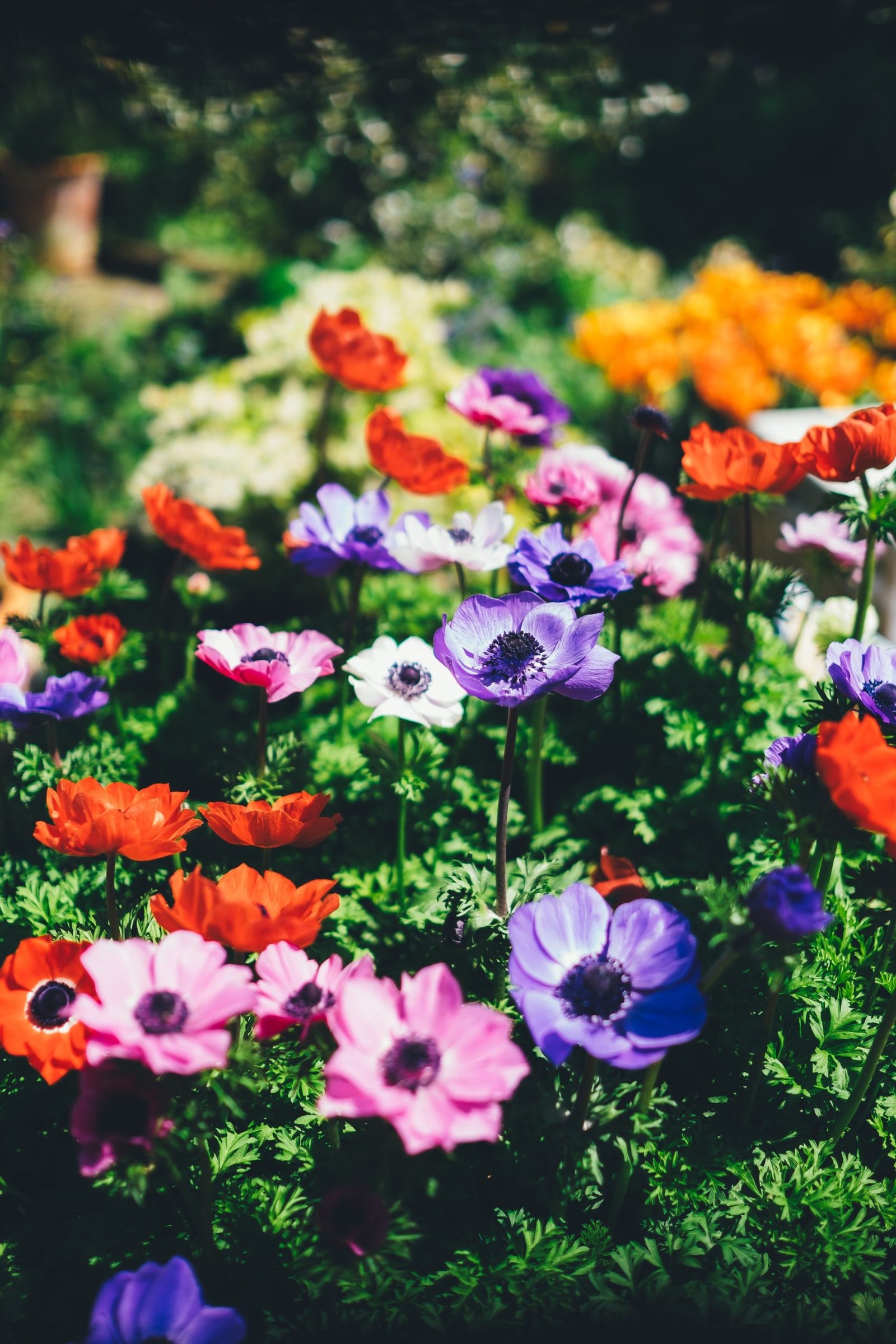The Best Plants for Your Sunny Garden

1. Dahlia
Dahlias are known for their vibrant and diverse flower colors, making them a stunning addition to any sunny garden. From deep purples to bright yellows and pinks, these flowers offer a wide range of colorful options that can elevate the visual appeal of your outdoor space.
This plant, a perennial flower, thrives in full sun, making it an excellent choice for gardens that receive ample sunlight throughout the day. Its ability to withstand direct sunlight ensures that it will flourish and produce an abundance of blooms during its peak season.
One of the key advantages of dahlias is their low maintenance nature coupled with a long blooming period in full sun flowers. They require minimal care while offering extended periods of beautiful blooms, adding a touch of elegance to your garden without demanding excessive attention.
For those who enjoy bringing fresh cut flowers indoors, dahlias make excellent choices due to their impressive bloom time and sturdy stems. Their showy flower spikes also contribute to their reputation as fantastic cut flowers, perfect for creating stunning floral arrangements or bouquets.
When considering which plants to include in your sunny garden, dahlias stand out not only for their striking flower colors but also for their resilience in full sun conditions and remarkable longevity when in bloom.
2. Bee Balm
Bee balm is a top choice for sunny gardens due to its ability to attract pollinators such as bees and butterflies. This makes it an excellent option for gardeners looking to support local ecosystems, promote biodiversity, and attract insect pollinators. Bee balm is known for being resistant to mildew, making it a low-maintenance plant ideal for sunny spots.
Moreover, the plant’s resistance to deer and low maintenance make it a reliable option for areas where wildlife may pose a threat to other garden plants. Its aromatic leaves with a minty scent adds another layer of appeal, providing not only visual beauty but also sensory delight in the garden.
In terms of sun exposure, bee balm thrives in full sunlight, making it suitable for gardens that receive ample sunshine throughout the day. The nectar-rich flowers bloom time are particularly attractive to bees, which play a crucial role in pollination and maintaining healthy ecosystems.
3. Tropical Milkweed
Tropical milkweed leaves bloom in full sun, attracting monarch butterflies with its bright orange and yellow flowers. This plant is a favorite among butterfly enthusiasts due to its ability to support the entire life cycle of monarchs, from egg-laying to caterpillar feeding.
The aromatic foliage of tropical milkweed adds an extra layer of appeal, emitting a pleasant scent in the garden. It thrives in full sun conditions and can be a stunning addition to any sunny garden landscape. It is known for being easy to grow from seeds or cuttings, making it accessible even for novice gardeners.
In terms of environmental impact, this plant serves as an important food source for insect pollinators like butterflies while also adding vibrant colors and textures to the garden.
Proven Winners Zones: Tropical milkweed typically grows well in zones 9-11 but can also thrive in other zones with proper care.
4. Canna
Canna plants are known for their striking tropical-like foliage, adding a touch of exotic beauty to any garden. The large, showy flowers come in various colors, making them an eye-catching addition to sunny landscapes. These plants thrive in moist, sunny conditions and can reach impressive heights.
The leaves of the Canna plant spread out wide, creating a lush and vibrant display that adds depth and texture to garden borders or beds. Their tall habit makes them ideal for creating focal points or filling up empty spots in the garden landscape in full sun.
In terms of water requirements, Cannas do best with consistent moisture; however, they also tolerate short periods of drought once established. Their adaptability to full sun and different conditions makes them an excellent choice for gardens where everything from heat to occasional dry spells may occur.
Cannas are available in a wide range of sizes and forms, offering something for every location within the garden plan. Whether it’s a compact variety suitable for containers or a towering selection perfect as a backdrop plant, there is a Canna suitable for every spot in the garden.
5. Peony
Peonies are known for their fragrant, large, and lush blooms, making them an attractive addition to any sunny garden. These perennial plants are not only visually stunning but also long-lived, providing years of beauty with minimal maintenance.
The peony‘s ability to produce excellent cut flowers for arrangements adds practical value to its aesthetic appeal. This makes it a versatile choice for gardeners who want to enjoy the beauty of their plants both outdoors and indoors.
In terms of dealing with pests like deer, peonies are generally resistant due to their bitter taste and tough foliage. This can be a significant advantage in areas where deer populations pose a threat to garden vegetation and habit.
6. Russian Sage
Russian Sage is a stunning addition to any sunny garden, offering silvery foliage with an aromatic scent that enhances the overall ambiance of the space. Its drought-tolerant nature makes it a low-maintenance plant, thriving even in hot and dry conditions without requiring constant watering or attention. This characteristic also makes it an ideal choice for regions with water restrictions.
In addition to its aesthetic appeal, Russian Sage is known for being deer-resistant, making it a practical option for gardens located in areas with high deer populations. This feature ensures that the plant remains undisturbed and continues to flourish without being damaged by wildlife.
Furthermore, this perennial herbaceous plant adds a soft and airy texture to the garden landscape. Its tall spires of small blue flowers create an ethereal effect when swaying gently in the breeze, adding visual interest and dimension to the garden while attracting pollinators such as bees and butterflies.
Overall, Russian Sage stands out as an excellent choice for sunny gardens due to its striking appearance, minimal maintenance requirements, and ability to thrive in challenging environmental conditions.
7. Coneflower (Echinacea)
Coneflower, also known as Echinacea, boasts medicinal properties in both its roots and flowers. Echinacea has been traditionally used to boost the immune system and alleviate cold symptoms. Studies have shown that it contains active compounds with potential anti-inflammatory, antioxidant, and antiviral effects.
This plant is highly resilient, thriving in sunny gardens due to its exceptional heat tolerance. It can withstand drought conditions and even poor soil quality, making it an ideal choice for low-maintenance gardening.
Furthermore, Echinacea’s vibrant blooms are not only visually appealing but also serve as a magnet for birds and butterflies. The nectar-rich flowers attract pollinators such as bees and butterflies while the seeds of the coneflower are favored by various bird species.
8. Lavender
Lavender is an aromatic herb renowned for its calming properties, making it a popular choice for sunny gardens. This fragrant plant not only adds visual appeal but also contributes to a serene and relaxing atmosphere.
Its ability to thrive in hot, sunny conditions makes it ideal for gardens with ample sunlight. Lavender is drought-tolerant and requires minimal maintenance, making it suitable for busy gardeners or those looking for low-maintenance plants.
One of the most striking features of lavender is its beautiful purple spikes of flowers that add vibrant color and visual interest to any garden space. These flowers not only attract pollinators but also create a picturesque landscape during the blooming season.
9. Sedum
Sedum is an excellent plant for sunny gardens due to its succulent foliage, which comes in various shapes and colors. This low-maintenance shrub thrives in poor soils, making it a perfect choice for sunny borders or ground cover in areas with intense sunlight.
The plant’s ability to tolerate dry, rocky soil and harsh sunny conditions makes it an ideal option for gardeners looking to fill their landscape with plants that can withstand challenging soil conditions. Sedum’s adaptability to partial shade also contributes to its versatility in different garden plans.
Furthermore, beyond its aesthetic appeal and resilience, sedum serves as a magnet for butterflies and bees. Its attractive blooms not only enhance the visual appeal of the garden but also contribute to supporting local pollinators.
10. Perennial Poppies
Perennial poppies are renowned for their bold, papery blooms that come in a variety of vibrant hues, adding a stunning visual impact to any sunny garden. These flowers are not only visually captivating but also boast self-sowing capabilities, making them low-maintenance additions to the garden landscape.
Their ability to self-sow means that once established, perennial poppies can continue to thrive without much intervention from the gardener. This makes them an excellent choice for those seeking plants that require minimal upkeep while still providing beautiful blooms year after year.
In addition to their practical benefits, perennial poppies bring a whimsical touch to the garden with their delicate and unique appearance. Their striking petals and elegant stems create an enchanting atmosphere in any outdoor space.
When planning a perennial garden or looking for sun perennials to enhance your outdoor area, these evergreen perennial poppies stand out as an ideal choice due to their resilience and enduring beauty.
Frequently Asked Questions
What are the best plants for a sunny garden?
The best plants for a sunny garden include Dahlia, Bee Balm, Tropical Milkweed, Canna, Peony, Russian Sage, Coneflower (Echinacea), Lavender, Sedum, and Perennial Poppies. These vibrant and resilient plants thrive in ample sunlight and can add beauty to any sunny garden.
How should I care for Dahlia in a sunny garden?
Dahlias require well-drained soil and regular watering when planted in a sunny garden. Ensure they receive at least 6-8 hours of direct sunlight daily. Deadhead spent blooms regularly to encourage continuous flowering throughout the season.
Can Bee Balm thrive in full sun?
Yes! Bee Balm flourishes in full sun conditions. It’s essential to provide adequate moisture during dry spells and space the plants appropriately to promote good air circulation. Regular deadheading will help prolong its blooming period.
Is Tropical Milkweed suitable for hot and sunny areas?
Tropical Milkweed thrives in hot and sunny locations with well-draining soil. This plant is an excellent choice for adding vibrant colors to your garden while attracting butterflies with its nectar-rich flowers.
What type of soil is ideal for growing Lavender in a sunny garden?
Lavender thrives in well-drained sandy or loamy soil with low fertility – similar to what you’d find on Mediterranean hillsides. Avoid overwatering as it can lead to root rot; instead, allow the soil around lavender plants to dry out between waterings.



